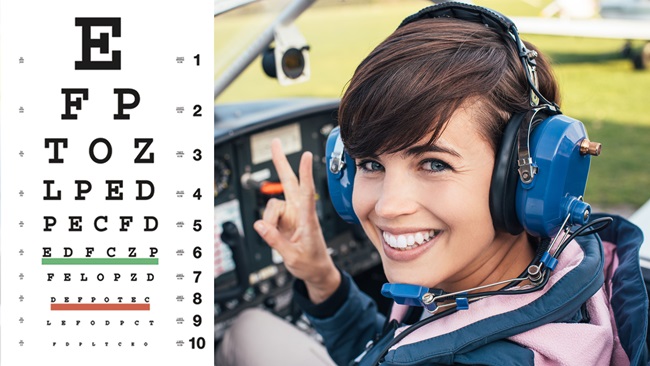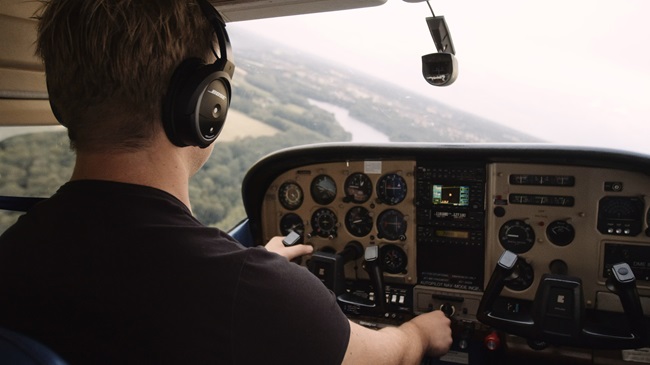AOPA Online Members Only -- AOPA ePilot Custom Content -- Vol. 9, Issue 16

The following stories from the April 20, 2007, edition of AOPA ePilot were provided to AOPA members who expressed an interest in the particular subject areas. Any AOPA member can receive information tailored to their areas of interest by updating their preferences online.
My ePilot – Student Interest, Training Tips
WHAT IF...
What would the density altitude be at your home airport if the temperature soared to 95 degrees F? Would it be safe to take off at maximum gross weight from your shortest runway? Could you climb over any nearby obstructions?
Crunching the numbers to answer questions like these is essential before flying under conditions that challenge your aircraft's performance capabilities. But there's no reason to wait until you are confronted with a dubious situation to see what you might be up against. To get an idea of the decisions you may face some day, and for more practice working with performance data, break out your flight computer and pilot's operating handbook or connect with an online flight-data calculator, and plug in some numbers for combinations of airports, atmospheric conditions, and aircraft that you are likely to experience.
Work out a cross-country route using a variety of winds-aloft forecasts to get a sense of whether an extra fuel stop should be planned into the flight. Challenge yourself further by working out the foregoing problem using aircraft loadings that prevent carrying full fuel. See the November 17, 2006, Training Tips article "Term review: Useful load."
Finding the density altitude is another good way to test theoretical flight conditions against your aircraft's capabilities (and your own). See the July 2003 AOPA Flight Training column, "The Weather Never Sleeps: Density Altitude." How will your aircraft perform on takeoff and climb under conditions of high elevation and hot temperatures? An airport sitting at 6,000 feet mean sea level would have a standard temperature of 37.6 degrees F. But if the temperature on the ground there is 95 degrees F when you must take off, your aircraft's performance will more closely resemble the much-diminished performance to be expected under standard conditions for 9,600 feet msl. Estimate the effects of various temperatures on density altitude quickly by using the chart in Figure 9-4 of the Pilot's Handbook of Aeronautical Knowledge .
"What if" scenarios are frequently used to teach emergency preparedness, but they can prepare a pilot for normal operations too. All that's needed to make the exercise beneficial is a set of conditions that don't fit the usual pattern, and a resulting prediction of aircraft performance that makes the pilot sit up and take notice.
My ePilot – Training Product
SPORTY'S CROSS-COUNTRY BACKPACK HOLDS YOUR GEAR
Who says you have to carry a traditional flight bag on your cross-country flights? Sporty's offers a backpack-style flight bag that is customized to suit a pilot's needs. It features a built-in hook-and-loop strip at the top to suspend a headset within the pack for extra protection, pockets inside the main compartment to hold charts, logbooks, and other essentials, and a padded electronic accessory pocket that could store a GPS handheld unit or electronic E6B. The backpack comes in five colors and sells for $79.95. For more information or to order, see the Web site.
Note: Products listed have not been evaluated by ePilot editors unless otherwise noted. AOPA assumes no responsibility for products or services listed or for claims or actions by manufacturers or vendors.
My ePilot – Student Interest, Final Exam
Question: I've just started studying the different classes of airspace and notice that my home airport has a couple of rectangular-shaped, magenta-dashed lined outcroppings from the airport. What type of airspace is covered in those specific areas?
Answer: These areas are classified as Class E airspace that extends down to the surface and requires the appropriate weather minimums of Class E airspace. The primary purpose of these areas is to allow for additional protection of controlled airspace for those pilots flying instrument approach procedures into the airport. The FAA's Aeronautical Chart User's Guide outlines the many different VFR and IFR symbols you may come across during your flight planning. Additional information on airspace is covered in the AOPA Air Safety Foundation's Know Before You Go online course.


